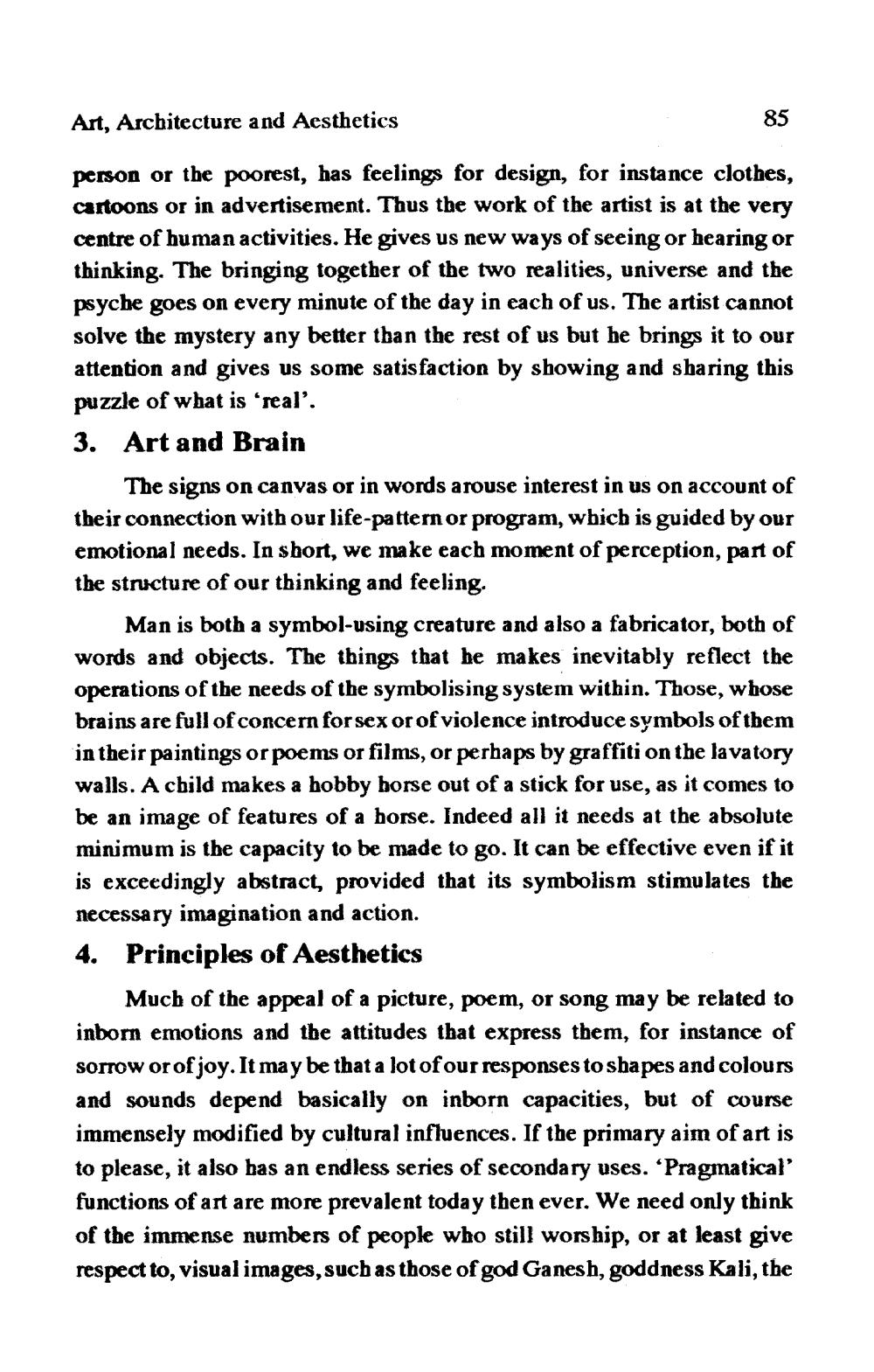________________
Art, Architecture and Aesthetics
85
person or the poorest, has feelings for design, for instance clothes, cartoons or in advertisement. Thus the work of the artist is at the very centre of human activities. He gives us new ways of seeing or hearing or thinking. The bringing together of the two realities, universe and the psyche goes on every minute of the day in each of us. The artist cannot solve the mystery any better than the rest of us but he brings it to our attention and gives us some satisfaction by showing and sharing this puzzle of what is 'real'. 3. Art and Brain
The signs on canvas or in words arouse interest in us on account of their connection with our life-pattern or program, which is guided by our emotional needs. In short, we make each moment of perception, part of the structure of our thinking and feeling.
Man is both a symbol-using creature and also a fabricator, both of words and objects. The things that he makes inevitably reflect the operations of the needs of the symbolising system within. Those, whose brains are full of concern forsex or of violence introduce symbols of them in their paintings or poems or films, or perhaps by graffiti on the lavatory walls. A child makes a hobby borse out of a stick for use, as it comes to be an image of features of a horse. Indeed all it needs at the absolute minimum is the capacity to be made to go. It can be effective even if it is exceedingly abstract, provided that its symbolism stimulates the necessary imagination and action. 4. Principles of Aesthetics
Much of the appeal of a picture, poem, or song may be related to inborn emotions and the attitudes that express them, for instance of sorrow or of joy. It may be that a lot of our responses to shapes and colours and sounds depend basically on inborn capacities, but of course immensely modified by cultural influences. If the primary aim of art is to please, it also has an endless series of secondary uses. “Pragmatical' functions of art are more prevalent today then ever. We need only think of the immense numbers of people who still worship, or at least give respect to, visual images, such as those of god Ganesh, goddness Kali, the




